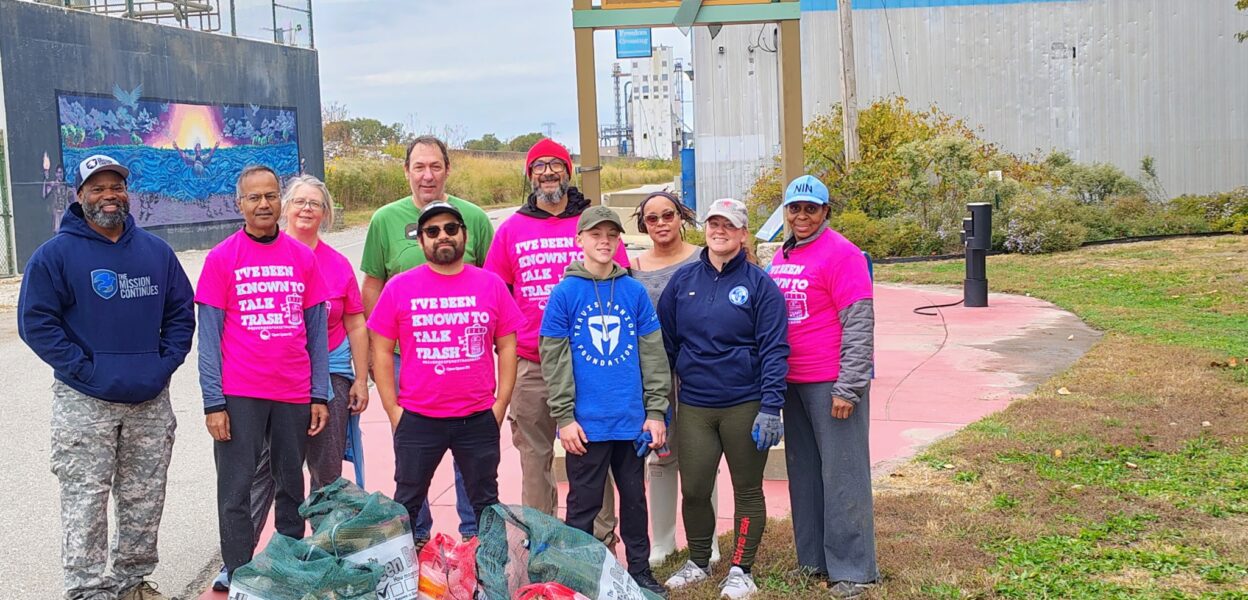The River des Peres has long been both a symbol of St. Louis’s resilience and a reminder of its challenges. Once a natural waterway, it was engineered (and buried through Forst Park) to control flooding—an uneasy balance between nature and infrastructure. Today, efforts like the annual River des Peres Trash Bash reflect how residents and organizations are working to restore that balance, one cleanup at a time. The event embodies a growing civic movement toward environmental stewardship and community pride that’s redefining how St. Louisans care for their shared spaces.
Last Saturday’s Trash Bash brought out dozens of volunteers to clean up the River des Peres Watershed and nearby parks across the metro area. The large-scale effort, organized by Open Space STL, Great Rivers Greenway, EarthWays Center at the Missouri Botanical Garden, MSD Project Clear, St. Louis County Parks, and Missouri Stream Teams, showcased what collaboration can accomplish.
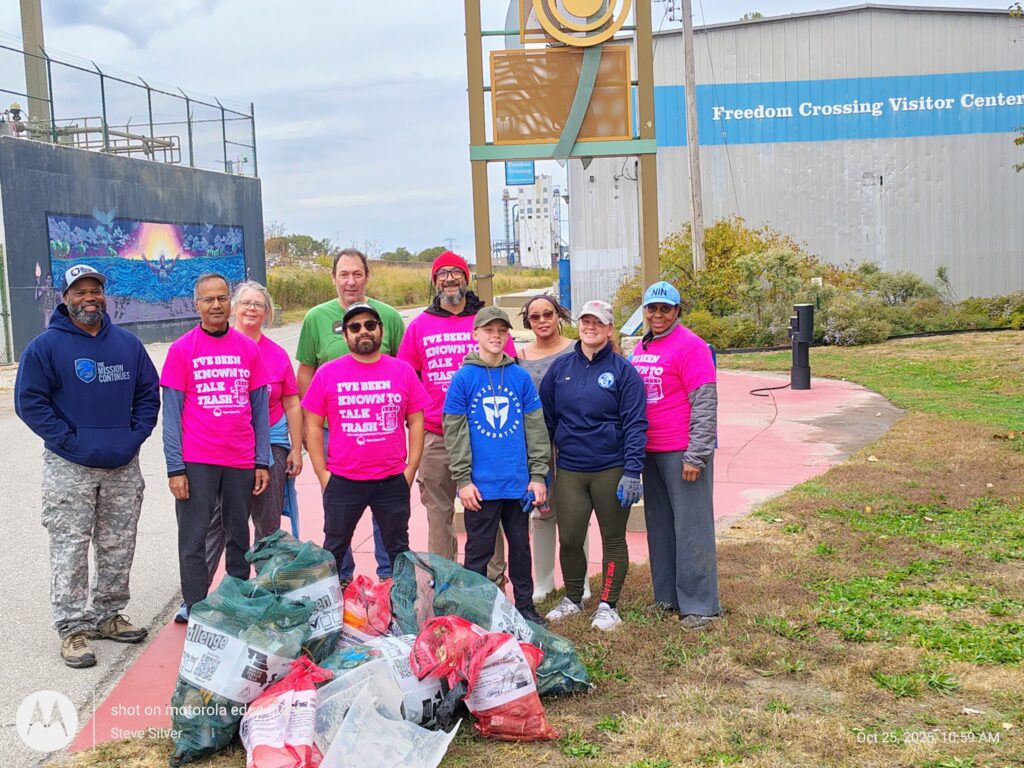
Doug Geist, a board member of the River des Peres Watershed Coalition and longtime Missouri Stream Team volunteer, called the event “a wonderful example of how organizations and volunteers can come together with a shared goal to protect our waterways and keep St. Louis clean and vibrant for everyone.”
Volunteers from across the region joined in, including members of the STL Cleanup Crew, known for their regular neighborhood pickups, and Aaron Dohogne, who also leads Trash for Trees, a group that pairs litter removal with tree planting. Teams worked sites stretching from Olivette to the Mississippi River, from O’Fallon Park and the Mary Meachum Freedom Crossing all the way down to the greenway near River City Casino.
Together, the volunteers accomplished a truly Herculean task in just a few short hours. While Open Space STL won’t have a full report for at least a week, early estimates suggest that several thousand pounds of trash were removed from parks and streams—including more than 600 pounds of metal—with the final tally potentially even higher once all sites report in.
Now in its second decade, the Trash Bash has turned some cleanup spots into annual traditions. This year also reinforced a genuine city–county partnership. Dohogne, who led the cleanup at Mt. Pleasant Park in south city, said, “It was good to know that people were willing to travel a long way in order to help other communities.” As he noted, volunteers came from Arnold, Wildwood, Creve Coeur, and Chesterfield to lend a hand in the city, while a number of municipalities, such as Glendale, helped with trash hauling afterward.
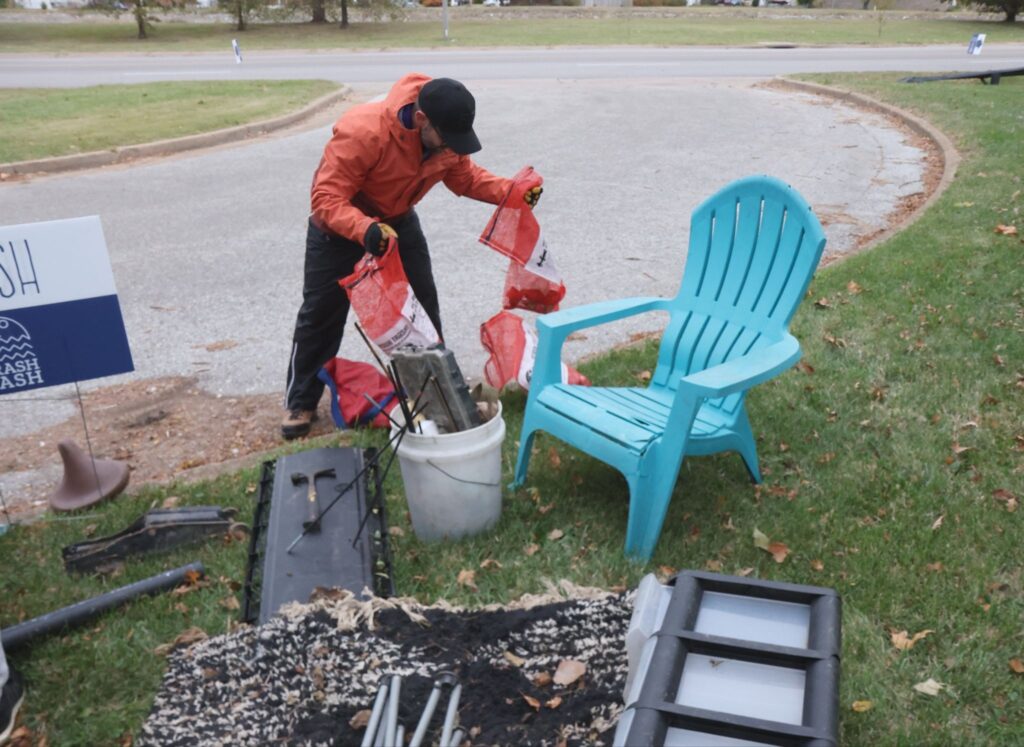
Progress You Can See
“St. Louis is blessed with lots of trails, parks, rivers, and unique communities that are part of the fabric of living here,” said Bonnie Harper, Executive Director for Open Space STL. “It’s important to keep our home clean to showcase our pride in residing here, and to ensure these natural resources are cared for.”
Katie Franke, Community Conservation Program Manager at Open Space STL, said she “wants to make STL a better place to live for all people.” She added, “Everyone deserves to live in a clean place without trash, and when we all chip in, we can truly make a change.”
Franke also emphasized the purpose of Open Space STL’s mission: to protect and conserve open spaces and waterways. “When we remove trash from the land,” she said, “we’re not only protecting the land, but we’re also stopping it from invading our streams. It’s one thing we can all do together.”
And it’s something that we all need to take seriously. Dohogne noted that trash cleanup is a big task and requires constant effort. According to Keep America Beautiful, 152 pieces of litter are generated per person in the US each year. “We need more people picking up litter,” Dohone said. “If 10,000 St. Louis City residents each picked up 4,256 pieces of litter each year, we’d have a clean city.”
While we aren’t anywhere close to that figure now, it’s getting better. According to Harper, at one cleanup site, Fultz Field, the amount of trash has dropped dramatically over time. “Trash haulers used to have to make five or six trips to get everything volunteers pulled out,” she said. “Now it’s more like two. That’s a sign of progress, as these places are staying cleaner, particularly as they’re seeing more recreational use.”
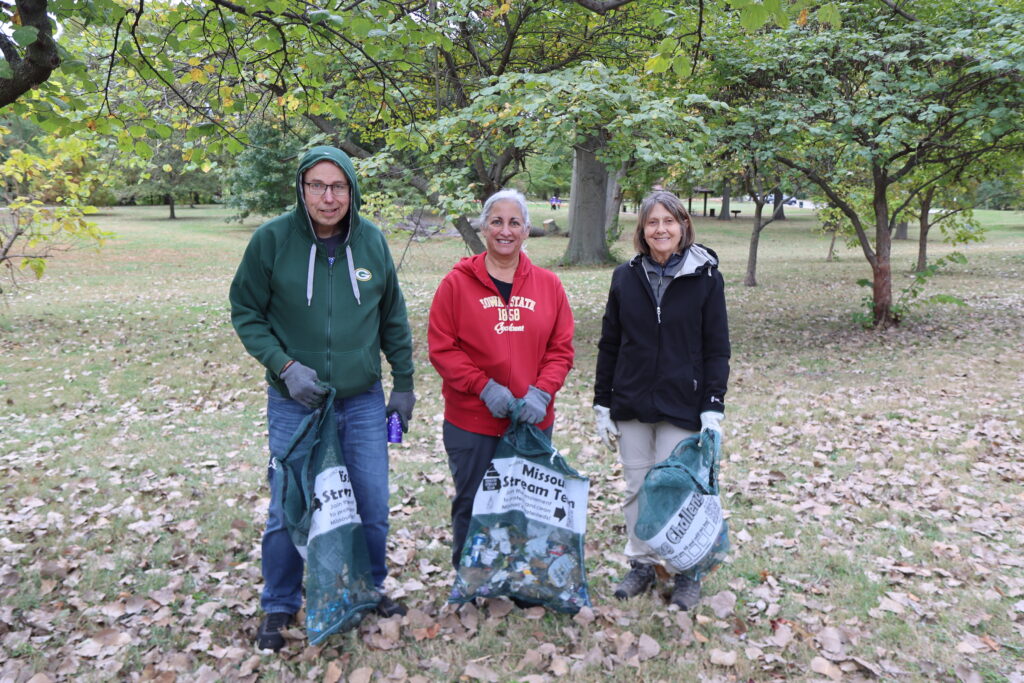
The Power of Small Actions
Harper added that “events like the Trash Bash remind us that caring for our environment is something we all share responsibility for. It’s inspiring to see people of all ages and backgrounds come together for a common cause. Every effort—big or small—helps protect our waterways and make St. Louis a cleaner, healthier place to live.”
The Trash Bash and similar efforts aren’t just about picking up trash. As Geist put it, “it’s also about coming together and taking pride in where we live.”
Franke sees that spirit firsthand. “When our volunteers work together to pick up all the discarded cigarette butts around a ball field or band together to help lift an ATM out of a river,” she said, “they form a common bond.”
And yes, an ATM was one of the items volunteers retrieved this year, as well as a disco ball, busted lawn furniture, a rusty shovel, a toilet, and a fake $100 bill, among many other items.
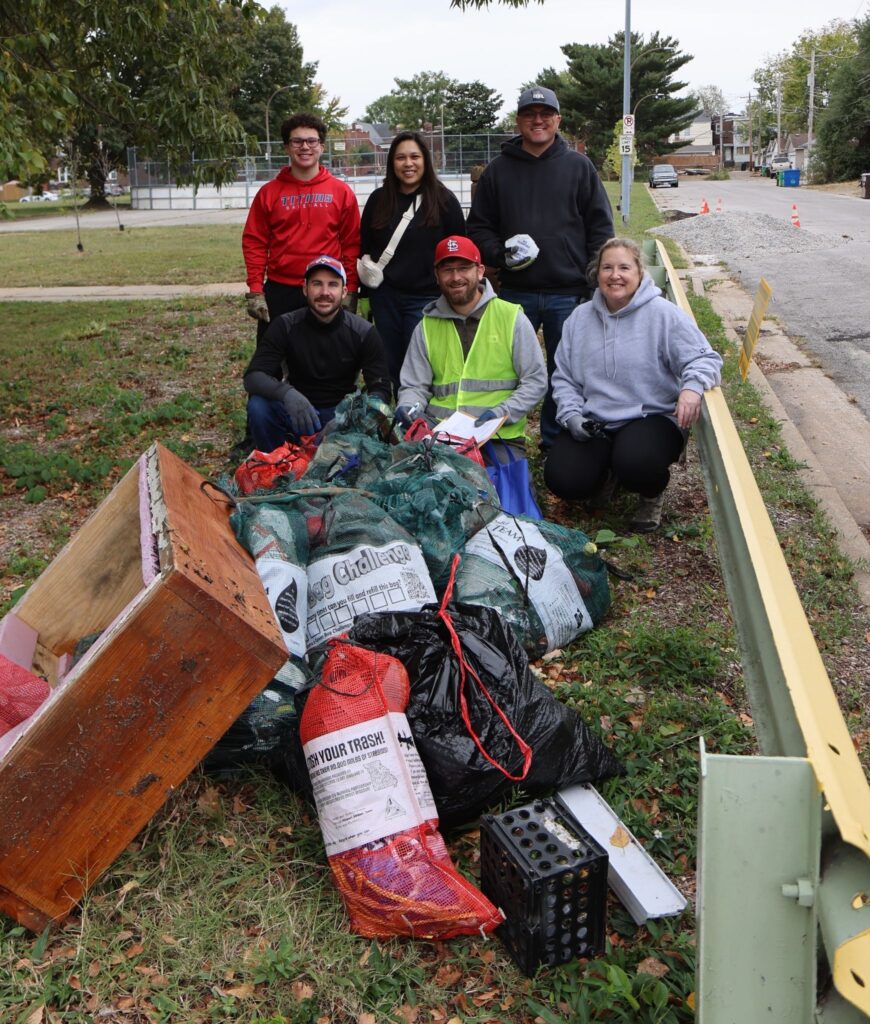
Harper echoed that sense of shared purpose. “Trash is an ongoing problem, and people should be appreciative of our volunteers’ efforts and inspired to take action themselves. We can make St. Louis cleaner and greener, especially when people join forces across communities.”
Still, the work ahead is steady and incremental. Geist offered this reminder: “Yes, there’s a lot to be done, but progress happens one small effort at a time. Every piece of trash picked up and every volunteer who shows up contributes to a cleaner, stronger St. Louis. Together, small actions add up to big change.”
Franke hopes one day events like the Trash Bash won’t be necessary. “If there’s one thing I would like people to take away from these cleanups,” she said, “it’s the good feeling of making a difference. It’s not likely that we’ll get rid of our trash problems anytime soon, but it’s nice to know that there are a lot of amazing, inspiring people who are willing to spend the time to improve the world around us.”
Her final words lingered like a challenge and a compliment to the city she loves: “Look for the heroes—there were a lot of them out there today.”
Photos by Jackie Dana and Steve Silver.
